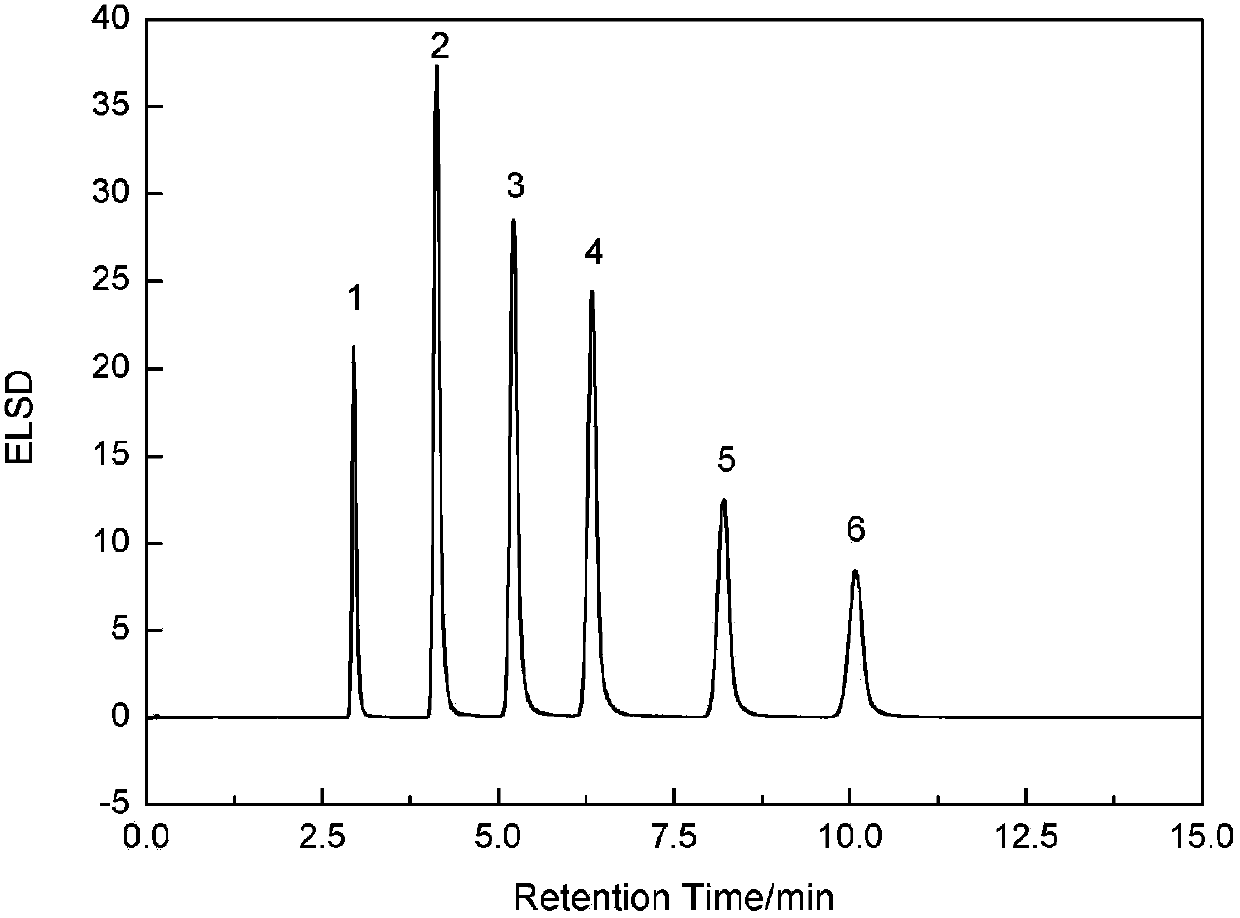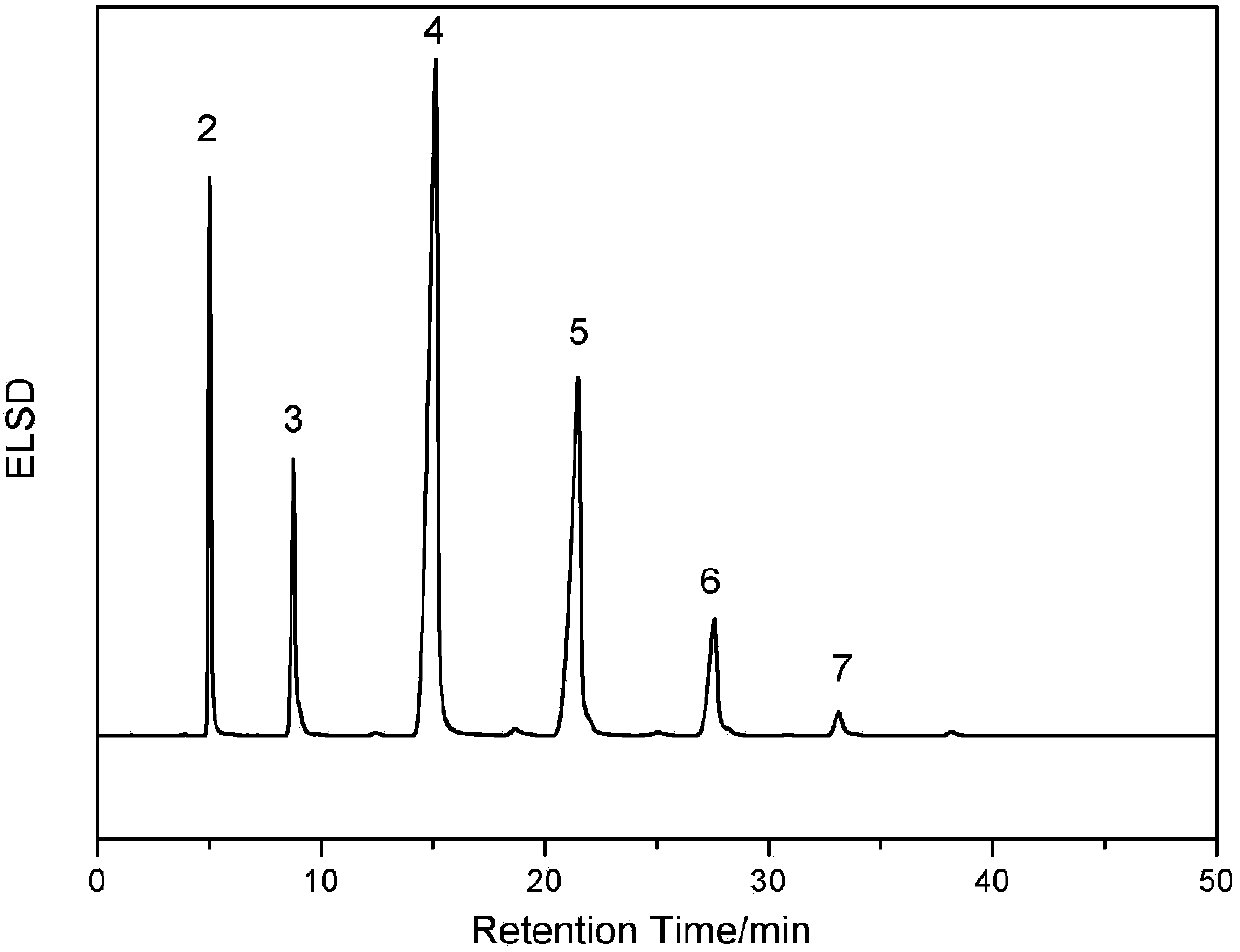Preparation method and application of hydrophilic chromatographic stationary phase of cationic polysaccharide coating type
A cationic polysaccharide and hydrophilic chromatography technology is applied in the field of preparation of a cationic polysaccharide-coated hydrophilic chromatography stationary phase, which can solve the problems of cumbersome steps, affecting yield and the like, and achieves simple and easy-to-control process, high conversion rate, and technical applicability. wide range of effects
- Summary
- Abstract
- Description
- Claims
- Application Information
AI Technical Summary
Problems solved by technology
Method used
Image
Examples
Embodiment 1
[0038] Add 350ml of anhydrous toluene and 23.8mL of γ-triethoxypropylmercaptosilane into a 500ml three-neck flask, heat and stir in an oil bath at 110°C, and carry out nitrogen reflux protection. Then add a particle size of 5 μm and a pore size of The specific surface area is 100m 2 g -1 20g of spherical silica particles, reacted at 110°C for 24 hours, and finished the reaction with 4 # The sand core funnel was suction filtered, washed with toluene, acetone, water and methanol in sequence, drained and dried overnight in an oven at 80°C. Next, 200 mL of 30% hydrogen peroxide solution and 60 mL of methanol solution containing 1 mL of sulfuric acid were added to the reaction intermediate product, stirred slowly at room temperature for 20 hours, washed with water and methanol, and dried to obtain sulfonated silica gel. Elemental analysis results: C1.47%, N0%, H0.78%. Add sulfonated silica gel to 1% cationic cellulose solution, the feeding ratio is 10:1, stir at room temperatu...
Embodiment 2
[0042] The chromatographic column prepared in Example 1 was used to separate sugars and sugar alcohols in the mode of hydrophilic interaction chromatography. With acetonitrile / water as the mobile phase, the volume ratio of acetonitrile and water is 80 / 20, sugar and sugar alcohols have been well separated, as shown in figure 2Shown (1 is ribose, 2 is mannitol, 3 is sucrose, 4 is maltitol, 5 is raffinose, 6 is melezitose).
Embodiment 3
[0044] The chromatographic column prepared in Example 1 was used to separate the galactooligosaccharide sample in the mode of hydrophilic interaction chromatography. Using acetonitrile / water as the mobile phase, under the conditions of gradient elution (water volume content: 0-60 minutes: 20-40%), the galactooligosaccharide sample has been well retained and separated, such as image 3 As shown, (2 to 7 in the figure represent di-to-heptasaccharides with different degrees of polymerization respectively).
PUM
| Property | Measurement | Unit |
|---|---|---|
| particle diameter | aaaaa | aaaaa |
Abstract
Description
Claims
Application Information
 Login to View More
Login to View More - R&D
- Intellectual Property
- Life Sciences
- Materials
- Tech Scout
- Unparalleled Data Quality
- Higher Quality Content
- 60% Fewer Hallucinations
Browse by: Latest US Patents, China's latest patents, Technical Efficacy Thesaurus, Application Domain, Technology Topic, Popular Technical Reports.
© 2025 PatSnap. All rights reserved.Legal|Privacy policy|Modern Slavery Act Transparency Statement|Sitemap|About US| Contact US: help@patsnap.com



